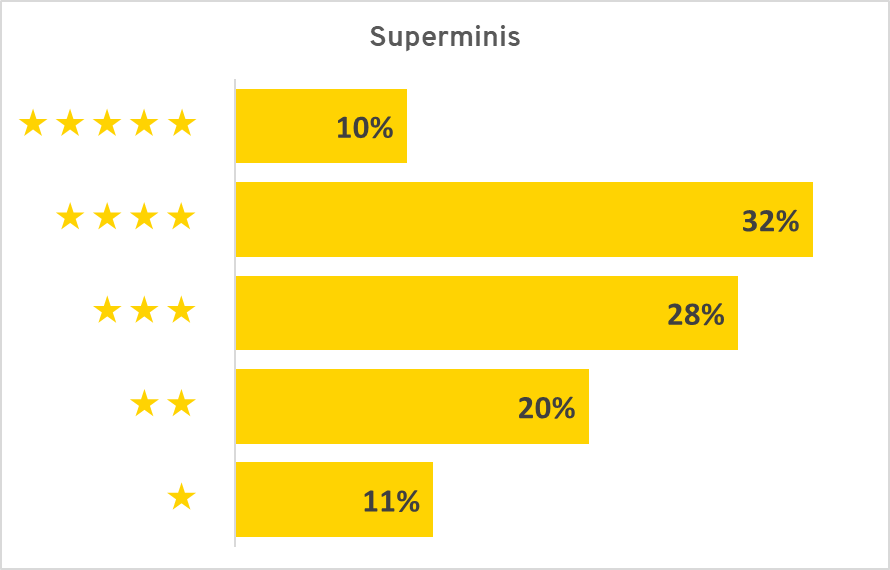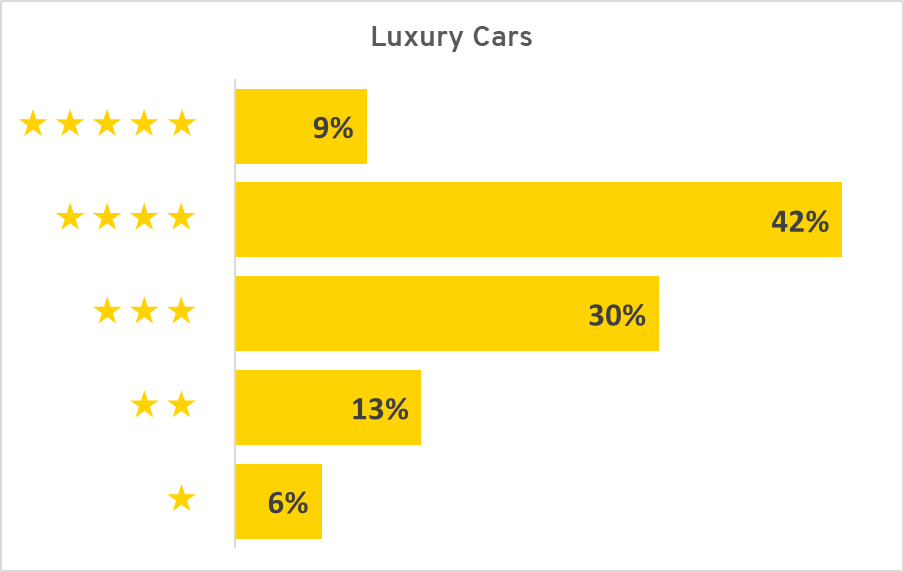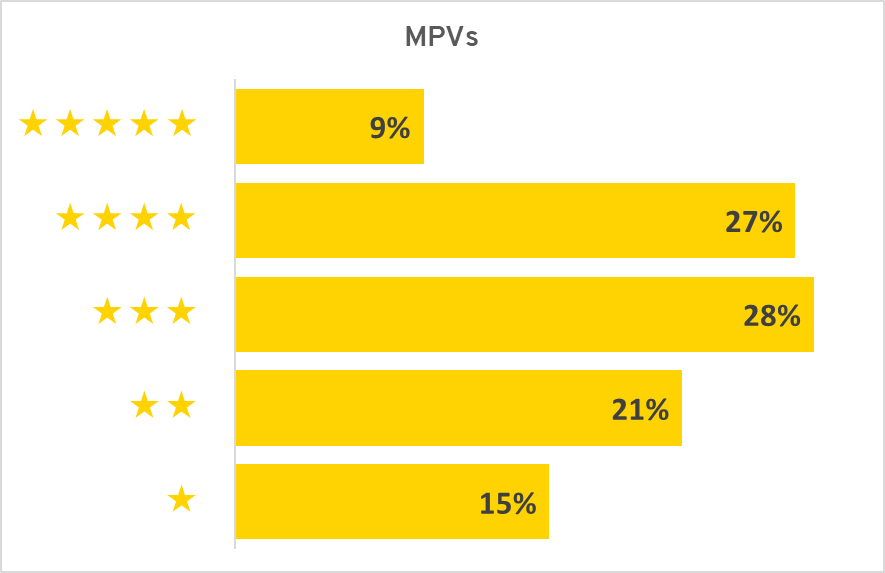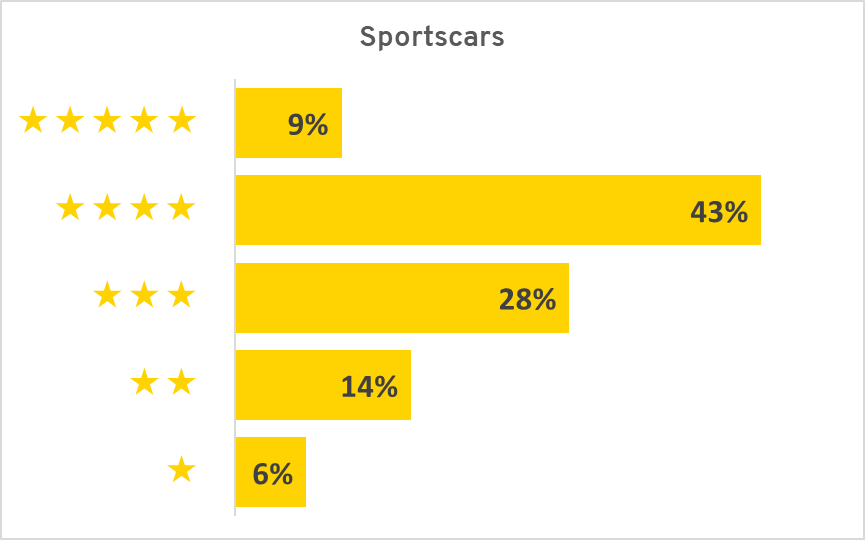6 Minute read
Welcome to a post we’re publishing in response to a recent What Car? article that we think doesn’t paint the full picture on which cars have the best MOT results. To be clear, we’re not rubbishing the What Car? article, and indeed we’re pleased that someone else is highlighting the importance of MOT history when looking at buying a used car. What we’re saying is that you need to dig a bit deeper before you’re able to get information that the typical used car buyer can use.
So, what’s our concern about What Car?’s article? We’ll go into a lot more detail about that below, but basically newer and more expensive cars tend to have better MOT results – and that’s a large part of that the What Car? article is saying. The cars that are at the top of its rankings tend not to have been on sale that long and / or are expensive models. For example, there are four Porsches in its top 10, and the number one car has only been on sale since 2017.
Most of us are looking for cheaper and older cars than the ones that get mentioned as the best cars in the What Car? article, and that limits the usefulness of the advice, especially when you bear in mind the differences in MOT performance for different types of car.
We’ve identified significant differences in MOT histories for different types of car, and as you’ll see, a lot of the cars at the top of the What Car? ranking come from the segments that tend to get higher CarXpert ratings.
We’re going to be publishing a series of articles on which type of cars in each segment get the best MOT results (we’ve published one on Superminis already – view it here). We think these will be more helpful as usually people are looking for one particular type of car – SUV, city car, sportscar etc, so knowing which are the best used cars of each type is important.
Here at CarXpert we’ve developed a unique way of rating cars based on their MOT history. We give cars a rating of between one and five stars based on their MOT failures, MOT advisories, and overall MOT history. That’s the basis for the analysis that we’ve done, and it’s a more detailed approach than the one used by What Car? where they only looked at first time pass rates.
If you have a used car that you’re considering, enter the registration number here and CarXpert will give you its ratings.
As we’re looking at how cars of different body types (or “segments”) compare we need to be clear on what we mean by body type. Here’s the list of body types with some examples:

To come up with the figures for each body type we analysed the MOT histories of around half a million cars, and what we found was that there are significant differences between different segments.
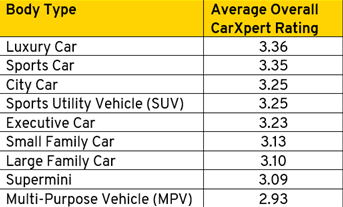
At first sight you might say “so what”? Every type of car except for MPVs gets an average rating of 3 and a bit stars out of a possible 5. It’s when you look in a bit more detail the differences become clear.
Here’s a summary of how the ratings for type of car with the highest average rating – luxury cars –break down:
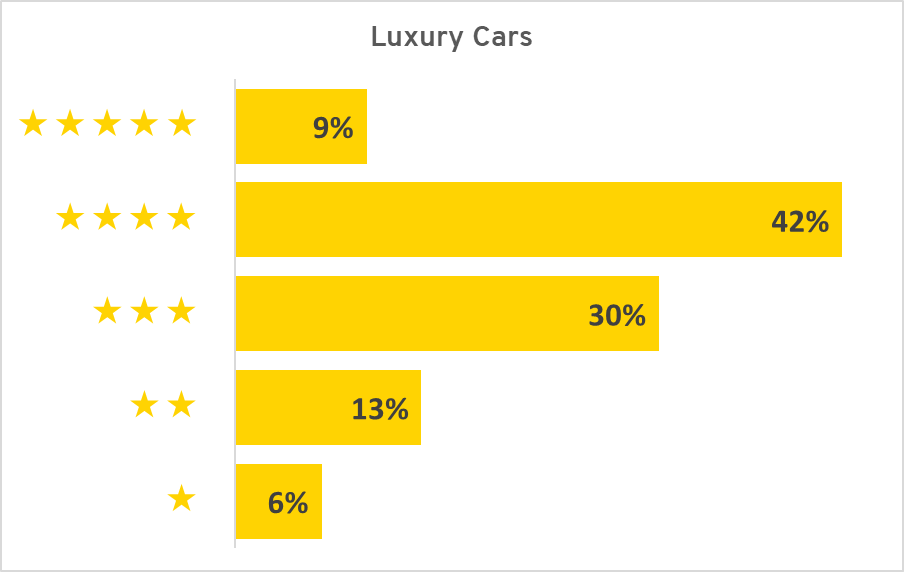
And here’s the breakdown for MPV’s, the type of car with the lowest average overall ratings –

Here’s a few key points when you compare the two –
Only 6% of Luxury cars get a one-star rating, whereas for MPVs it’s 15%. If you look at one- and two-star ratings combined (all the cars with worse than average ratings) then it’s 19% and 36% respectively. Basically, if you looked at a number of used MPVs then you’re nearly twice as likely to come across some worse than average ones than if you were looking at luxury cars.
And on the flip side, over half of luxury cars (51%) have a better than average rating, while that’s the case for only 36% of MPVs.
If you consider how a car like a Ford Galaxy gets used compared to a BMW 7 Series then it’s not that surprising that MPVs tend to get lower ratings. The BMW probably has quite a pampered life, and as an expensive car is probably owned by someone who can afford to maintain it properly. The Ford is much cheaper, and particularly once it’s of an age to have a few MOTs under its belt, may be run on a tight budget. It’s also been bought by someone who needs the space – so it’s often the family bus, and in some cases may even be used more like a van.
We’re not criticising Galaxies or their owners, we’re just highlighting that on average MPVs like Galaxies tend not to do as well at MOT time as some luxury cars. As a result, you might need to spend more time and effort trying to find an MPV that’s got a good MOT history and is therefore likely to be in better condition than if you were looking for a luxury car. We will be publishing a comparison of MPV models, so keep an eye out for that.
One thing you might wonder is why SUVs rate so much higher than MPVs given that they’re sometimes bought for similar reasons? We believe the main factor is the age of the cars. SUVs have been around for a while, but have exploded in popularity recently. This Autocar article from 2019 states that SUV’s were 6.6% of vehicle sales in 2009, but by 2018 that had risen to 21.2%. Therefore the fleet of SUVs that are out there is made up disproportionately of younger cars, and that will have an effect on MOT results.
Below is the breakdown for all the car segments, please have a look and keep an eye out for when we publish the rankings for the type of car that you’re interested in. In the meantime, we hope you found this article helpful, and it would be great to get your feedback in the comments – especially if there are particular car types that you’d like to see articles about, or indeed if there other topics about MOT data that you’re interested in.

